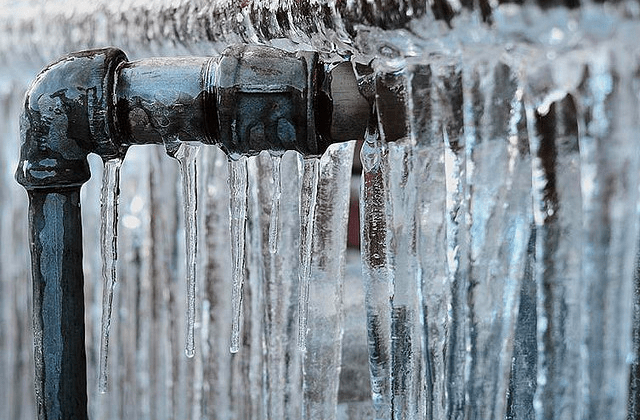Ways to Protect Your Pipes from Cold Weather: Expert Advice
Click For More InfoWe have stumbled upon this article relating to Winter Plumbing Precautions: Preventing Frozen Pipes down the page on the internet and reckoned it made good sense to write about it with you over here.

Winter can damage your plumbing, specifically by freezing pipelines. Here's just how to avoid it from happening and what to do if it does.
Introduction
As temperature levels decline, the threat of frozen pipes boosts, possibly causing pricey repair services and water damage. Comprehending just how to prevent icy pipes is vital for property owners in cool climates.
Recognizing Frozen Pipelines
What triggers pipes to freeze?
Pipes freeze when revealed to temperature levels listed below 32 ° F (0 ° C) for prolonged periods. As water inside the pipelines ices up, it expands, taxing the pipeline walls and potentially creating them to break.
Risks and problems
Frozen pipelines can result in water supply disturbances, building damage, and costly fixings. Ruptured pipes can flood homes and create comprehensive architectural damage.
Indications of Frozen Pipes
Recognizing icy pipes early can avoid them from breaking.
How to determine frozen pipes
Look for reduced water circulation from taps, uncommon odors or noises from pipes, and visible frost on revealed pipelines.
Prevention Tips
Shielding vulnerable pipelines
Wrap pipelines in insulation sleeves or make use of heat tape to secure them from freezing temperature levels. Focus on pipes in unheated or outside areas of the home.
Heating strategies
Keep interior areas properly heated up, specifically locations with pipes. Open closet doors to permit cozy air to flow around pipelines under sinks.
Protecting Outside Pipes
Yard pipes and outside faucets
Disconnect and drain yard tubes prior to winter months. Set up frost-proof faucets or cover exterior faucets with shielded caps.
What to Do If Your Pipes Freeze
Immediate actions to take
If you think icy pipes, maintain faucets open to relieve stress as the ice melts. Use a hairdryer or towels taken in hot water to thaw pipelines slowly.
Long-Term Solutions
Structural modifications
Think about rerouting pipelines away from outside wall surfaces or unheated areas. Include extra insulation to attic rooms, basements, and crawl spaces.
Updating insulation
Purchase top quality insulation for pipelines, attic rooms, and walls. Proper insulation helps preserve constant temperature levels and decreases the danger of frozen pipelines.
Verdict
Stopping icy pipelines needs aggressive measures and quick reactions. By comprehending the causes, signs, and preventive measures, house owners can secure their pipes throughout winter.
6 Proven Ways to Prevent Frozen Pipes and Protect Your Home
Disconnect and Drain Garden Hoses
Before winter arrives, start by disconnecting your garden hoses and draining any remaining water. Close the shut-off valves that supply outdoor hose bibs and leave the outdoor faucet open to allow any residual water to drain. For extra protection, consider using faucet covers throughout the colder months. It’s also important to drain water from any sprinkler supply lines following the manufacturer’s directions.
Insulate Exposed Pipes
Insulating your pipes is an effective way to prevent freezing. Pipe insulation is readily available at home improvement stores and is relatively inexpensive. Pay close attention to pipes in unheated areas such as the attic, basement, crawl spaces, or garage. Apply foam insulation generously to create a buffer against the cold. You can also wrap your pipes in heat tape or thermostat-controlled heat cables for added warmth.
Seal Air Leaks
Inspect your home for any cracks or openings that could let in cold air. Seal any holes around the piping in interior or exterior walls, as well as the sill plates where your home rests on its foundation. Additionally, make sure to keep your garage door closed unless you’re entering or exiting. Leaving it open creates a significant air leak that can lead to frozen pipes.
Allow Warm Air Circulation
During cold snaps, it’s essential to allow warm air to circulate evenly throughout your home. Leave interior doors ajar to promote better airflow. Open kitchen and bathroom cabinets to help distribute heat consistently around the rooms. If you have small children or pets, be sure to remove any household chemicals or potentially harmful cleaners from open cabinets for safety.
Let Faucets Drip
A small trickle of water can make a big difference in preventing ice formation inside your pipes. When temperatures drop significantly, start a drip of water from all faucets served by exposed pipes. This continuous flow helps prevent the water from freezing. Additionally, running a few faucets slightly can relieve pressure inside the pipes, reducing the chances of a rupture if the water inside does freeze.
https://choateshvac.com/6-proven-ways-to-prevent-frozen-pipes-and-protect-your-home/

Do you really like reading about 6 Ways to Prevent Frozen Pipes? Leave feedback below. We'd be delighted to listen to your insights about this blog posting. In hopes that you come back again in the future. Those who appreciated our page plz do not forget to pass it around. Thank-you for going through it.
Get Estimate